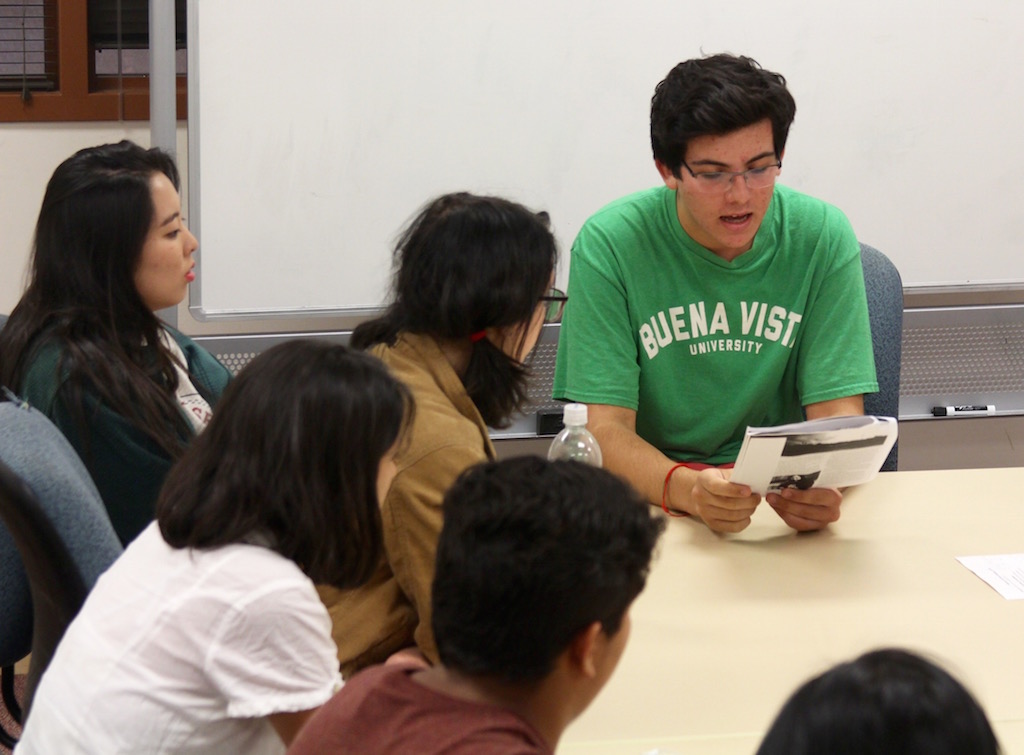By Cole Cahill, Brandon Yung, & Ashton Carless
Tiger Staff
Graphics by Truman Lesak
Graphic Designer
Illustration by Ashton Carless
Staff Illustrator
“Every day in sixth grade, I was given a worksheet with basic arithmetic questions. The answers of these questions would correspond to letters and would on completion spell out a riddle or joke. Every day I sat in class, finished my riddle worksheet, and wished I was actually learning math. At the beginning of every year, I would beg the counselors to let me take honors math. Despite my A’s in regular classes, despite my mastery of skills, despite my persistence to excel, the honors math classes were always full. Slowly but surely I would stop doing homework for math, because it was simply not worth my time. This habit would continue throughout middle school and into high school. With the new changes in math placement procedures in middle school and high school, maybe I would have made it out of the monotony that was my math education.”
-Anonymous Survey Respondant
The push to give kids a competitive academic edge starts early in South Pasadena. Beginning in 5th grade, students are tested for placement into their middle school math class. The options available before the implementation of Common Core curricula were Math 6, Math 6 Honors, and Pre-Algebra — the last being a year ahead of the other courses. The coveted advanced course only had two classes worth of spaces, pushing out those who were outscored by their peers. Once placed into one of these courses, a student’s math progression was set in stone. Many high schoolers today recall the rigidity of that separation — once a student was set on a “math track,” it was near impossible to change.
Junior Adam Hamden says that he was, for four years, misplaced in math. During the summer before his sophomore year, Hamden decided to take a bridge course; he attempted to take geometry as a summer school class, but was still repeatedly refused. Hamden finally found a way around it: he paid $700 to take a two semester Geometry course online.
“To some extent, I feel that I was misplaced early on, and there was nothing I could do about it,” Hamden said. He explained that not everyone who had the same experience could take an online class, and that for many, solutions are coming too late. “A senior today could say that their [math class] was determined by a test taken seven years ago.”
Problems with Placement
In the 5th grade, a student’s performance in the classroom is not so indicative of inherent skill, but more of that student’s home setting. A child with involved parents who have the means to provide more support outside of school will fare better in the classroom compared to those with parents (or one parent) who do not.
Students in standard level classes experience a less rigorous classroom environment and do not interact with more math-inclined students, when many would benefit more from an enriching atmosphere. Kids also face the stigma that they are intellectually inferior and less fit for honors classes in other subjects.
Implementation of Common Core classes has worsened the issue. In the 2014-15 school year, SPHS did not offer Math 1+ for incoming freshman. Students in standard 8th grade classes were placed in Math I, while honors and accelerated students were placed in traditional courses: Geometry and Advanced Algebra, respectively. New courses cover more material over a year, making it difficult for students to move between class levels without missing content. With these changes, students needed to take a summer bridge course to move up to Math 2+ for sophomore year, which was not accessible for many; only 43 students took the course in 2015-16, compared to 183 students from the following freshman class, who had access to “plus” classes, according to Ginger Merritt, Assistant Principal of Curriculum and Instruction.
Effects of the 5th grade test and subsequent placement reverberate even today. Ethnic demographics differed dramatically between math courses at SPHS. According to a survey of all juniors in Math 3 and Calculus conducted by Tiger, 43% Math III students are Latino, versus just 10% of Calculus students. The stigma that comes with math level also came through in the results of the survey: 31% more Calculus students than those in Math 3 rated themselves as “smart”.
An Issue Larger Than SPUSD
The tracking system, or “projected pathways” as they are formally termed, is not exclusive to South Pasadena. Most competitive school districts allow various difficulties of math to be taught in a middle school level, the idea being to suit each individual’s skill level. The problem arises, however, when math tracking becomes “math misplacement,” a practice which has come under fire for disproportionately affecting African Americans and Latinos.
A study done by the Lawyers’ Committee for Civil Rights of the San Francisco Bay Area (LCCR) found that nine bay area schools were practicing “math misplacement”, when they wrongfully forced mostly underprivileged minority students to repeat Algebra 1. The study prompted legislation to be passed in order to prevent math misplacement. The California Math Placement Act aims to make math placement more fair and accessible for students of all backgrounds. The California Mathematics Placement Act was implemented for the first time last year. The bill requires that school districts “develop and adopt, in a regularly scheduled public meeting, a fair, objective, and transparent mathematics placement policy for pupils entering grade 9.” SPUSD, along with all other districts, is making vast changes to how it approaches academic mobility.
With the adoption of the recent legislation, the test will be readministered each year of middle school, and the district is developing a method to provide more mobility between high school In middle school, accelerated courses will also no longer be limited by class size; instead, students will proceed into advanced courses if they meet the criteria to do so.
Incoming sixth graders are now eligible for accelerated math if they score 90% or higher on the placement test, receive a “4” on CAASPP testing, along with either a teacher recommendation or a grade of “5” in their math class. The change has only been implemented to the new 6th grade class at SPMS, but numbers already reflect increased enrollment in accelerated and honors classes; 54.3% of sixth graders are in these classes this school year compared to 45.8% last year.
Looking Forward
These changes are an undeniable improvement upon the previous set of standards. The implementation of the Math Placement Act makes SPUSD education more flexible for its students. However, the solution is a small fix for a larger issue.
Much of a student’s future educational career is still determined at the young age of 11, when home resources play a larger role in testing outcomes than actual ability. While changes in the district mark progressive steps toward a fairer education, it should still be considered that separating students so early on may be an outdated practice.
Instead of beginning to assign courses based on measurements taken in elementary school, classes should be made to be open enrollment starting in 6th grade. This practice would level the playing field for all students, regardless of their socio-economic background, home environment, parent involvement, or outside tutoring. South Pasadena has the means to accommodate for fluctuating honors and accelerated class size, and should encourage a larger number of students to pursue rigorous classes. A separation by testing outcome encourages an unhealthy culture of peer competition, taking away from the actual learning experience. Students and their families should be able to choose their own futures, and strive for success according to those choices.
Due to a production error the following description was omitted from pages 8 and 9 from the September 16, 2016 issue:
Tiger Newspaper conducted a survey to assess the separation and stigma at SPHS resulting from math tracking. Juniors in AP Calculus, an accelerated math class, and Math III, a standard math class, were asked to mark their race/ethnicity and the number of APs they currently take. They were also asked to assess themselves as “smart,” ”average,” or “not particularly smart,” and were asked if they believed that one’s level of math class reflects their general intellect.







